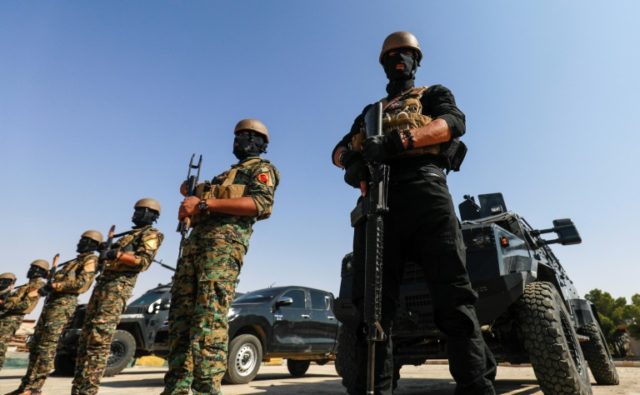The Kurdish chief of the U.S.-backed Syrian Democratic Forces (SDF) reportedly vowed on Thursday to clear the remnants of the Islamic State (ISIS/ISIL) from the group’s last bastion near the Iraqi border in northern Syrian within a month.
“We expect there will be an increase in the intensity of IS operations against our forces after the end of their military presence,” Mazloum Kobani, the SDF chief, told the Agence France-Presse (AFP) agency.
In November 2018, the Pentagon’s inspector general (IG) confirmed that ISIS only controls about one percent of the territory it once held, noting that the jihadi group’s last stronghold sits in northern Syria, near the Iraqi border.
Fighters from the Kurdish People’s Protection Units (YPG/YPJ) lead and make up the majority of the SDF, a Kurdish-Arab alliance backed by the U.S.-led coalition against the Islamic State, or IS.
“The operation of our forces against IS in its last pocket has reached its end and IS fighters are now surrounded in one area,” Kobani told AFP.
“We need a month to eliminate IS remnants still in the area,” he also said, adding, “I believe that during the next month we will officially announce the end of the military presence on the ground of the so-called caliphate.”
Along with the U.S.-led coalition, the SDF is part of the last phase (Operation Roundup) that began on September 10 to deal a lasting defeat to the ISIS in northeastern Syria, a region held by the Kurdish Democratic Union Party (PYD), the political wing of the YPG.
With the help of nearly 2,000 American troops and U.S. military equipment, the Syrian Kurds have been able to maintain control of large swathes of northern Syria where they have established an autonomous region.
U.S. President Donald Trump’s decision to withdraw the American troops prompted America’s Syrian Kurdish allies to accuse the United States of betraying them by leaving them vulnerable to attacks from Turkey, which considers the YPG and PYD to be an extension of the Kurdistan Worker’s Party (PKK) communist group. U.S. support for the Syrian Kurds has infuriated Turkey.
Echoing other analysts, the Kurds also believe a quick withdrawal could lead to an ISIS resurgence.
U.S. National Security Adviser John Bolton said early this month that the United States would not withdraw from Syria without assurances from Turkey that the Kurds will be safe and ensuring ISIS’s lasting defeat.
Bolton revealed that a residual American military force would remain in southern Syria to deal with the Iranian threat in the region.
The Pentagon IG warned that ISIS has morphed into “an effective clandestine” group that “has moved underground and is acting as an insurgency in” Iraq and Syria where it still poses a threat.
Kobani noted that the terrorist group’s new tactics include “sleeper cells everywhere, secretly recruiting people again, and carrying out suicide operations, bombings, and assassinations.”
While some U.S. military officials estimate that ISIS only has a couple of thousand jihadis in its last enclave, the Pentagon IG reported that there are “between 20,000 and 30,000” embers of the terrorist group in Iraq and Syria.
Although the SDF captured Hajin, the last town held by ISIS, the terrorist group has carried been able to break out of its territory and carry out a deadly attack against U.S. troops and their allies in recent days. The Syrian Kurds have reached out to the Iranian and Russian-backed regime of dictator Bashar al-Assad for help in repelling an impending attack from Turkey, the SDF chief confirmed.
According to the U.K.-based Syrian Observatory for Human Rights (SOHR), a group that uses ground sources to monitor the conflict, intense clashes in and around the region known as “the Hajin pocket” has left hundreds of fighters dead on both side.

COMMENTS
Please let us know if you're having issues with commenting.